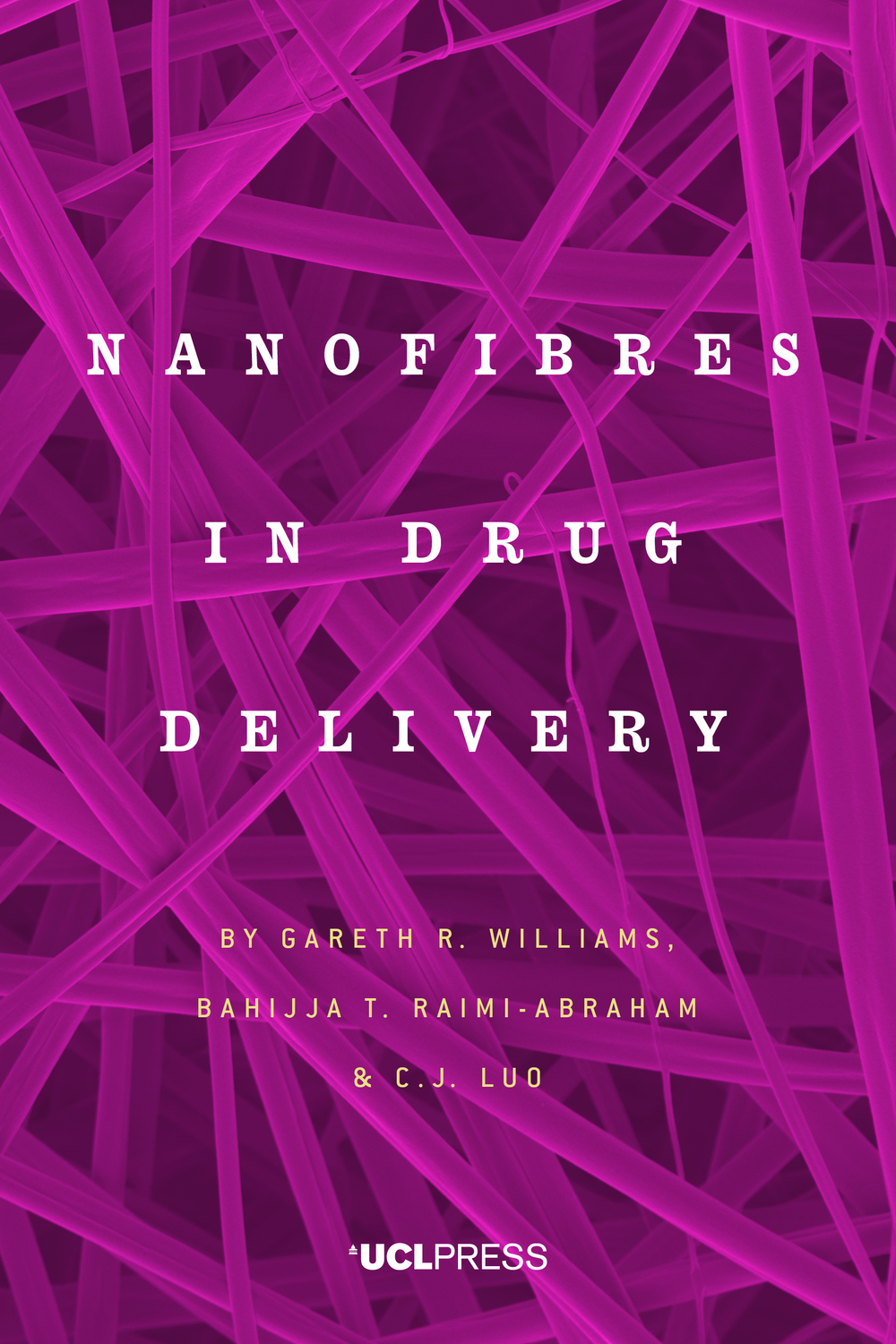Nanofibres in Drug Delivery
Gareth R. Williams, Bahijja T. Raimi-Abraham, and C. J. Luo
In recent years there has been an explosion of interest in the production of nanoscale fibres for drug delivery and tissue engineering. Nanofibres in Drug Delivery aims to outline to new researchers in the field the utility of nanofibres in drug delivery, and to explain to them how to prepare fibres in the laboratory.
The book begins with a brief discussion of the main concepts in pharmaceutical science. The authors then introduce the key techniques that can be used for fibre production and explain briefly the theory behind them. They discuss the experimental implementation of fibre production, starting with the simplest possible set-up and then moving on to consider more complex arrangements. As they do so, they offer advice from their own experience of fibre production, and use examples from current literature to show how each particular type of fibre can be applied to drug delivery. They also consider how fibre production could be moved beyond the research laboratory into industry, discussing regulatory and scale-up aspects.
Gareth R. Williams graduated with a DPhil from the University of Oxford in 2005, and joined the UCL School of Pharmacy in 2012. His research group work on a range of topics in drug delivery and vaccine formulation, with a particular emphasis on the use of electrohydrodynamic approaches to develop solid dispersions. He was awarded Fellowship of the Royal Society of Chemistry in 2017. C. J. Luo graduated from UCL in 2012 with a PhD in Biomedical Engineering. She took up a postdoctoral position at the University of Cambridge in 2013 before returning to UCL in 2016. Her current research is funded by the Engineering and Physical Sciences Research Council.Bahijja T. Raimi-Abraham graduated with a PhD in 2012 from the University of East Anglia School of Pharmacy in 2012 and is a registered and practising pharmacist. She went on to undertake postdoctoral research funded by the Engineering and Physical Sciences Research Council at the UCL School of Pharmacy, before joining King’s College London as a lecturer in 2017.
Format: Paperback
Size: 234 × 156 mm
242 Pages
ISBN: 9781787350236
Publication: September 17, 2018
Related products
A Conversation about Healthy Eating
What constitutes a healthy diet? Mainstream media and advertisers would like ...Biostratigraphic and Geological Significance of Planktonic Foraminifera
The role of fossil planktonic foraminifera as markers for biostratigraphical ...Epidemiological Change and Chronic Disease in Sub-Saharan Africa
Epidemiological Change and Chronic Disease in Sub-Saharan Africa offers new a...Evolution and Geological Significance of Larger Benthic Foraminifera
Evolution and Geological Significance of Larger Benthic Foraminifera is a u...








